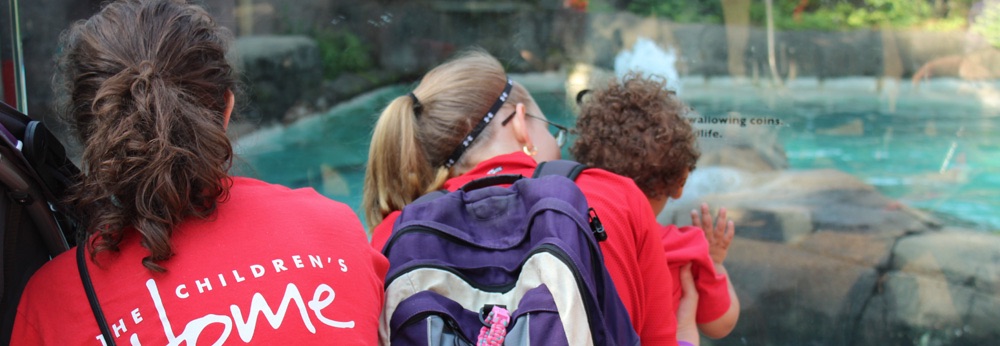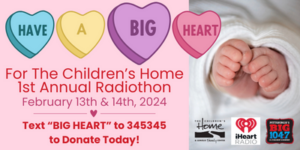Written by Kristie Lindblom, with edits by Erika Schmitt
Moral ambiguity, cultural identity, and dual loyalties are all issues those intimately involved in supporting children and youth in foster care are familiar with. At the Children’s Home of Pittsburgh, our work with resource families often involves helping families navigate the spaces where there is no ‘right’ choice for a child and support them through a trauma informed lens in finding ways to keep their child connected to the people and cultures they come from. This is often no easy task, though there are perspectives and lessons we can draw from history to inform the care we provide. As we acknowledge Holocaust Remembrance Day on January 27, 2024, we understand that the history of the many Jewish children hidden in plain sight to save their lives offers us important insight into issues the children we work with face today.
Though I was raised around Jewish culture and am married to a Jewish man, it was not until my children began attending Community Day School 12 years ago that I learned the term “hidden child.” As the Third Reich terrorized and hunted Jews in Europe throughout their occupation, some Jewish parents tried to save their children by hiding them with non- Jews who were brave enough to help. While some were physically hidden- such as Ann Frank- others were “hidden” in plain sight in a convent or with a non-Jewish family who raised that child as their own. For those of us who work in foster care especially, as we mark Holocaust Remembrance Day, we hold those hidden children with deep grief and recognition. To honor their lives and what was lost, we can work to understand the impact that being hidden had on their lives, their identity, and their culture so that we can take those lessons in to the work we do every day.
One primary lesson one can take note of is that in order to survive, culture and identity had to be be hidden, unacknowledged and unrecognized. Similarly, as foster care workers see regularly, foster youth survive by hiding aspects of themselves that may cause them to be abused (for example an LGBTQ youth hiding that aspect of their identity), or by hiding aspects of their past selves to best fit in with a new foster family, new peer group, or new educational system.
While for different reasons, both the foster youth of today and the hidden children of the holocaust share the trauma of parental separation and suddenly losing everything familiar to one’s identity. Sandra Rosenfeld, of the Holocaust Remembrance Center, notes that “We must bear in mind the trauma that the separation from their parents caused the children. Even if on some level the child could understand that their parents or guardians had acted to save them, these children suffered the trauma of separation from their family, loneliness and yearnings that followed such separation. A child who had been placed in the custody of strangers (a Christian family or institution) by a parent or temporary guardian who then disappeared, felt abandoned.” Add to this the loss of any sense of safety, the constant fear and not knowing the fates of loved ones and friends, the loss of a sense of control, the loss of a known community, and a persistent shadow knowing that if you were to be discovered, the very people who were helping you survive would also be lost to you. Every marker of trauma is present, and in fact, nearly 80 years after the holocaust was over, research demonstrates that loss, rejection, identity, intimacy, and control are all core issues for those who have been separated from their family and culture of origin, regardless of the age the separation occurred. These align with the core issues that children in foster care also struggle with. We see this so frequently that The Children’s Home of Pittsburgh holds a monthly support group for teens who have been adopted through foster care, addressing these core issues. The group focuses specifically on these themes to support a key aspect of teen development: identity building.
Loss of identity was evident for hidden children. Before the war there had been nearly one million Jewish children below the age of fourteen in Poland, where a significant majority of children were hidden. It is estimated that no more than some 28,000 of them survived – about three percent –and most of them had lost one or both of their parents (Bogner, p. 15). To survive, Jewish children who were hidden by non-Jewish rescuers had to pretend to be Christian. Rosenfield notes that “one of the most difficult aspects of rescue for the Jewish children was the identity crisis they experienced when they were forced to pass themselves off as Christian, but often they experienced a more difficult crisis when faced with a return to Judaism.” When the war ended, the surviving hidden children and their non-Jewish rescuers had to confront a profoundly difficult and complex reality. Now that they were liberated, what did that mean for them? Those that had changed their names, homes, parents, and even religions, faced an identity crisis and loneliness.
As it is so often the case for children being fostered, what was best for these children was often unclear. The few lucky parents who survived and were able to, returned and retrieved their children. There are stories of someone arriving to pick children up only to find the child wished to stay in their new homes that they were now used to and felt safe in. The predominant feeling in the surviving global Jewish diaspora was that given the catastrophic scope of the holocaust, every effort should be made to locate surviving children and bring them back to their Jewish culture. Many of these children were so young when they were initially hidden that they were unaware of their Jewish identity, or their recollection of Jewish culture and religion was hazy, at best. This meant that once again, their sense of self disintegrated.
It should be noted that those carrying out this mission were not thoughtless or unaware of this complex humanitarian dilemma. Their later testimonies acknowledge that while they have pride in restoring these children to their culture of origin, the process they had to go through to achieve that disturbed them deeply. Sara Neshamit, who was part of these recovery efforts, later testified, “Sometimes we had serious qualms about whether we had the right to remove a child from the home of his adoptive parents and thrust him into a psychological crisis. It was hard to be a witness to the tears shed by children when they parted with their Christian adopters, in whose home they had been so warmly treated. It was also hard to be a witness to the tears in the eyes of the adoptive mother when she handed over the child she had nurtured. Frequently we were apprehensive about the wrong that we were doing both to the children and to their ‘parents’… However, the national motive was the decisive factor. We had lost too many Jews, so it was our obligation to restore to our people everyone who survived (Bogner, p. 294).”
Reading Neshamit’s reflections reminds me of how, for those of us in child welfare, there is so often no good choice. Rather, we work to reduce the level of trauma a child will inevitably experience by their circumstance. At The Children’s Home of Pittsburgh, this looks like teaching foster parents the importance of maintaining the highest level of connection to a child’s family of origin that is safely and appropriately possible. And if contact is not safe or advisable, our parents also receive training and ongoing support to learn how to best honor their child’s culture and how to keep them connected to it ongoing. Our staff is trauma informed, and aware of the trauma that happens not just from separation from biological family, but from separation from a culture or community. We have a designated trauma lead, whose role it is to ensure continuity of trauma informed care and understanding the points of trauma that occur in the lives of the families we work with and how they manifest behaviorally in our kids. Families that need support navigating relationships within the adoption and foster care constellation of connections, or who would benefit from individual, couples, or family therapies are connected to our counseling services. While adoption through foster care is deeply complex, on Holocaust Remembrance Day, we are aware that out of such tragedy, came lessons that can guide us and help our families grow through healing, safety, and integration.
Nahum Bogner, At the Mercy of Strangers (Jerusalem: Yad Vashem Publications, 2009)
Rosenfeld, Sandra. “The Difficulties Involved in the Rescue of Children by Non-Jews – before and after Liberation.” Non-Jews Rescuing Children – Difficulties Before and After Liberation, www.yadvashem.org/articles/general/difficulties-in-rescue-of-children-by-non-jews.html#footnote16_4tuq5m4. Accessed 11 Jan. 2024.
United States Holocaust Memorial Museum, United States Holocaust Memorial Museum, encyclopedia.ushmm.org/content/en/article/life-in-shadows-hidden-children-and-the-holocaust. Accessed 11 Jan. 2024.


